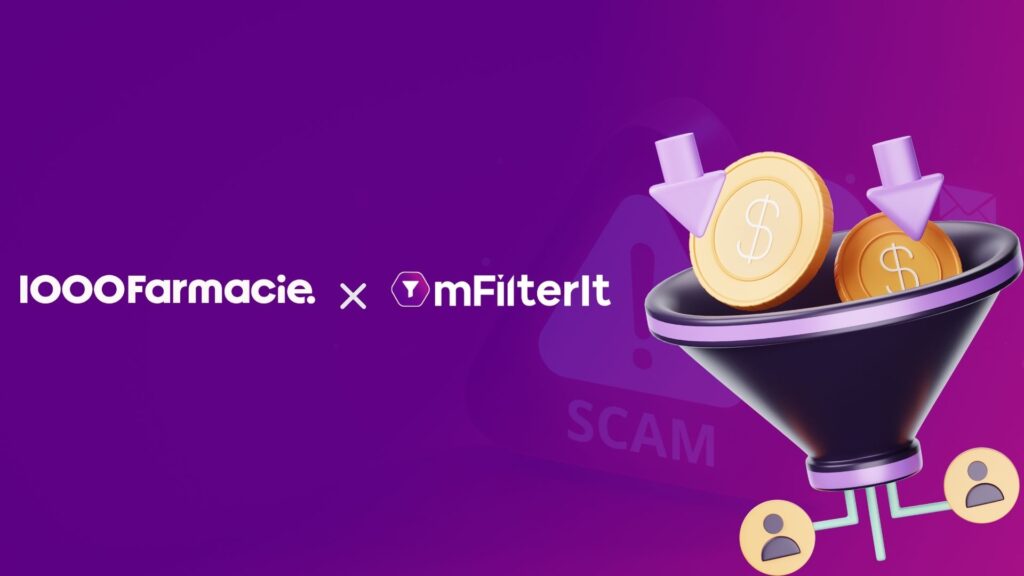Table of Contents
ToggleWhat is Direct Carrier Billing (DCB)?
DCB mobile payment method that allows users to make purchases and pay for digital content, goods, or services directly through their mobile phone bill or prepaid balance. It enables users to make payments without the need for credit or debit cards, making it convenient and accessible for a wide range of users.
How does Direct Carrier Billing (DCB) work?
DCB relies on the integration between the mobile network operator (MNO), the content provider, and the payment service provider (PSP). When a user wants to make a purchase, they choose the DCB payment option. The user is prompted to confirm the payment, usually through a text message or a pop-up window. The mobile operator verifies the user’s identity and approves the payment. The purchase amount is added to the user’s monthly phone bill or deducted from their prepaid balance.
Supported services: DCB is commonly used for various digital content and services, such as mobile apps, games, music streaming, video streaming, eBooks, and more. It is particularly popular for micro-transactions and in-app purchases within mobile apps and games.
What are the benefits of direct carrier billing?
A seamless user experience
One of the key advantages of Direct Carrier Billing is an improved user experience. By eliminating the need for payment card information (credit or debit), users can make purchases quickly and easily, without having to navigate through complicated payment forms. This can be especially important for mobile users, who may be using their device on the go and don’t want to spend time entering their payment information. With DCB, the payment process is seamless and integrated into the mobile experience, making it easier and more convenient for your users to make purchases.
Greater security compared to payment cards
Another benefit of Direct Carrier Billing is its security features. With DCB users do not need to enter their credit card information or other sensitive data to make a purchase. Instead, the transaction is completed by simply entering the mobile phone number and confirming the payment, which is then added to the user’s monthly mobile phone bill. This reduces the risk of fraud and provides a layer of anonymity that can be attractive to users who are wary of sharing their personal information online.
Of course, fraud is an issue when any financial transaction is involved. Cybercriminals are always on the lookout for opportunities to exploit vulnerabilities. However, mobile billing anti-fraud solutions can be deployed to protect the mobile billing payment page and block suspicious and fraudulent transactions; giving you and your customers reassurance that everything is being done to protect their accounts.
Increases financial inclusion for mobile users
Globally 1.4 billion people are unbanked, without access to a financial account. This means they don’t have access to traditional payment methods such as credit and debit cards, and therefore may struggle to pay for many digital services and products. Direct Carrier Billing removes this barrier by allowing users to pay for goods and services via their mobile phone bill or pre-paid SIM. This makes it easier for users with limited access to credit or bank accounts to make online purchases, opening up a new world of opportunities for digital content and services.
This is advantageous for merchants looking to expand into markets where a significant percentage of the population remains unbanked, such as in Iraq where only 22.7% of the population have a bank account compared to 10.30% who have a mobile phone connection and 75.0% who use the internet.
For mobile operators, facilitating DCB transactions helps them provide additional services for their unbanked customers, and increases customer satisfaction and retention.
Higher conversion rates
In addition to increasing financial inclusion, Direct Carrier Billing can also lead to increased conversions. DCB transactions involve minimal clicks and form filling. Whereas with traditional payment methods, users may abandon their cart if they encounter any difficulties during the payment process. This can be due to a variety of factors, such as complicated checkout procedures or concerns about security.
With Direct Carrier Billing the payment process is streamlined and easy to use, reducing the likelihood of cart abandonment and increasing the chances of a successful conversion.
New revenue streams
DCB allows mobile operators to earn a commission on transactions made by their customers. This commission can be a percentage of the transaction value or a fixed fee per transaction. As more customers use this method to make purchases, you will also benefit from increased transaction volumes. This can result in higher revenue from transaction fees and potentially lead to negotiating higher commission rates with merchants due to increased volume.
By developing stronger partnerships with merchants by facilitating DCB as a payment option, there may also be increased revenue-sharing opportunities and deeper integration with merchant services.
Increase customer retention
Finally, Direct Carrier Billing helps make customers ‘sticky’. By providing an easy-to-use payment method that is integrated with the user’s mobile phone bill, you can increase customer loyalty and reduce churn. This can be especially important in an industry where customer retention is a key factor in generating revenue.
DCB can also provide a platform for cross-promotion of other services, such as loyalty programs, value-added services, and promotions, which can result in increased sales revenue as well as increased customer retention.
So, if you’re looking to enhance the user experience and generate revenue, Direct Carrier Billing can provide your customers with additional services and products, with a seamless, convenient, and secure payment method.
DCB vs Credit cards
DCB (Direct Carrier Billing) and credit cards are two different payment methods with distinct characteristics. Here’s a comparison between DCB and credit cards:
Accessibility: DCB is often more accessible than credit cards because it allows users to make purchases using their mobile phones, without the need for a traditional banking relationship or credit history. This makes it particularly useful in regions with low credit card penetration or limited access to banking services.
Payment Process: With DCB, the purchase amount is charged to the user’s mobile phone bill or deducted from their prepaid balance. In contrast, credit cards involve a revolving line of credit issued by a bank, and users need to pay off the credit card balance later. This means that DCB enables immediate payment for goods and services, while credit cards involve a post-purchase payment process.
Security: Credit cards generally have well-established security measures, including fraud protection, chargeback mechanisms, and encryption protocols. DCB, on the other hand, may have varying levels of security depending on the implementation and region. While efforts are made to secure DCB transactions, it’s important to ensure robust security measures are in place to protect against fraud and unauthorized charges.
Transaction Limits: Credit cards often have predefined credit limits, which determine the maximum amount a user can spend. In DCB, transaction limits can be set by the mobile network operator or service provider. These limits can vary and may be subject to different regulations and agreements.
Transaction Experience: DCB offers a seamless payment experience, as users can complete transactions with just a few clicks on their mobile devices. Credit card transactions typically involve providing card details, including card numbers, expiry dates, and security codes, either online or at physical point-of-sale terminals.
International Usage: Credit cards are widely accepted globally, allowing users to make purchases both online and offline in various countries. DCB acceptance, however, can be more limited and dependent on agreements between mobile operators, service providers, and merchants. This means that DCB may have more regional or localized usage.
It’s important to note that the availability and acceptance of DCB and credit cards can vary significantly across different regions and markets. Additionally, user preferences and the specific requirements of merchants or service providers can also influence the choice between these payment methods.
DCB global penetration and market expectation
The global direct carrier billing (DCB) market was valued at USD 32.2 billion in 2021 and is projected to reach USD 96.7 billion by 2032, growing at a CAGR of 10.4% during the forecast period. The increasing demand for digital content and services, such as games, video-on-demand, audio, voice calls, e-books, podcasts, and others, is driving the market’s growth. The growing penetration of smartphones and the increasing use of mobile internet are also contributing to the growth of the market.
In terms of region, North America is the largest market for DCB, followed by Europe and Asia Pacific. The growth of the market in North America is attributed to the increasing adoption of mobile payments and the growing popularity of digital content and services. The market in Europe is also growing due to the increasing penetration of smartphones and the growing demand for digital content and services. The market in Asia Pacific is expected to grow at the highest CAGR during the forecast period due to the increasing adoption of mobile payments and the growing popularity of digital content and services in emerging global economies such as India, China, and South Korea.
The DCB market is expected to continue to grow in the coming years due to the increasing demand for digital content and services. The increasing penetration of smartphones will drive the growth of the market, the growing use of mobile internet, and the increasing adoption of mobile payments.
How can you develop a safe and secure DCB ecosystem?
Developing a safe and secure DCB ecosystem involves implementing various measures to protect users’ financial transactions and personal information. Here are some key considerations:
Strong Authentication: Implement robust authentication mechanisms to ensure that only authorized users can make DCB transactions. This can include using two-factor authentication, such as SMS verification codes or biometric authentication.
Transaction Limits: Set transaction limits to prevent unauthorized or fraudulent activity. Establishing maximum transaction amounts and daily limits can help mitigate the risk of large-scale fraud.
Fraud Detection and Prevention: Deploy advanced fraud detection systems and algorithms to identify suspicious activities and transactions. This can involve monitoring user behavior, and transaction patterns, and employing machine learning algorithms to detect and prevent fraudulent transactions.
Data Encryption: Encrypt sensitive user data, such as personal information and payment details, during transmission and storage. This helps safeguard the information from unauthorized access or interception.
Regulatory Compliance: Adhere to relevant data protection and privacy regulations, such as the General Data Protection Regulation (GDPR) or other local regulations, to ensure that user data is handled securely and in compliance with applicable laws.
Final Thoughts
Direct Carrier Billing (DCB) offers a seamless and secure mobile payment method that enhances the user experience and increases financial inclusion for mobile users. Its benefits include convenience, enhanced security, higher conversion rates, and new business revenue streams. When compared to credit cards, DCB is particularly advantageous in regions with limited credit card penetration. The global DCB market is projected to grow significantly due to the increasing demand for digital content and services. To develop a safe and secure DCB ecosystem, businesses should focus on strong authentication, transaction limits, ad fraud detection, data encryption, and regulatory compliance. By implementing these measures, businesses can ensure a smooth and secure DCB experience for their users, fostering customer loyalty and driving revenue growth.







